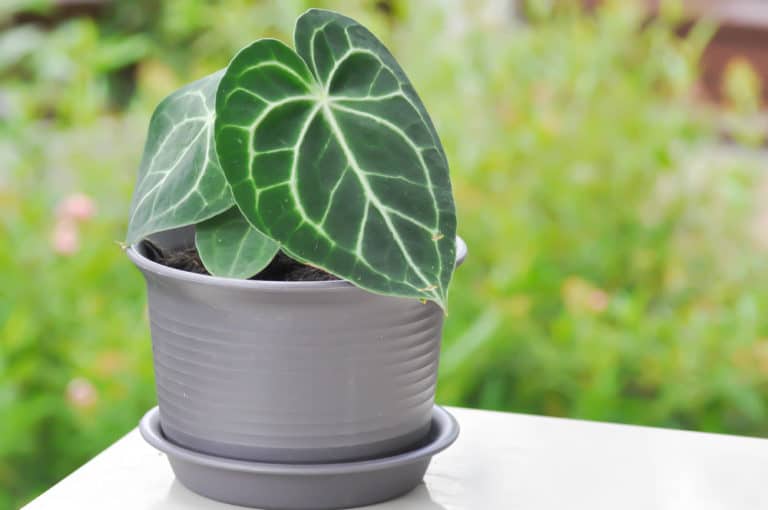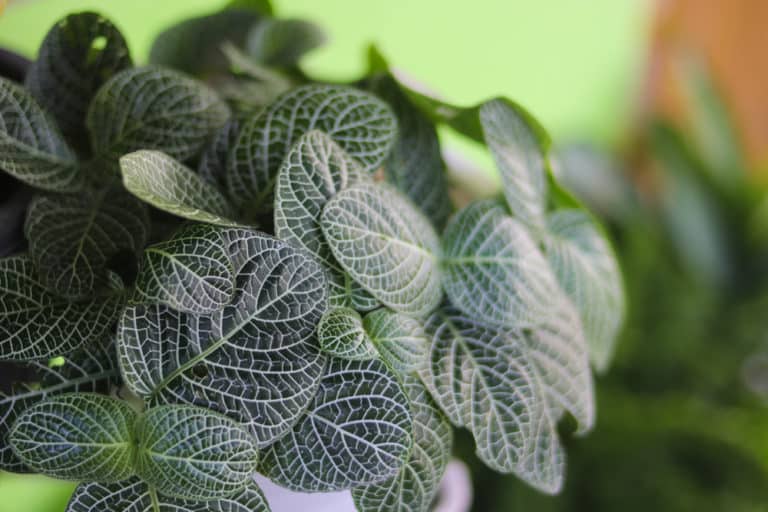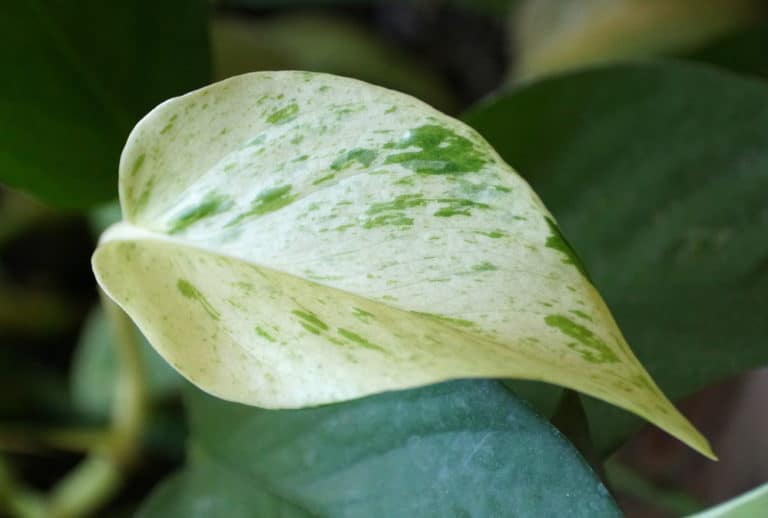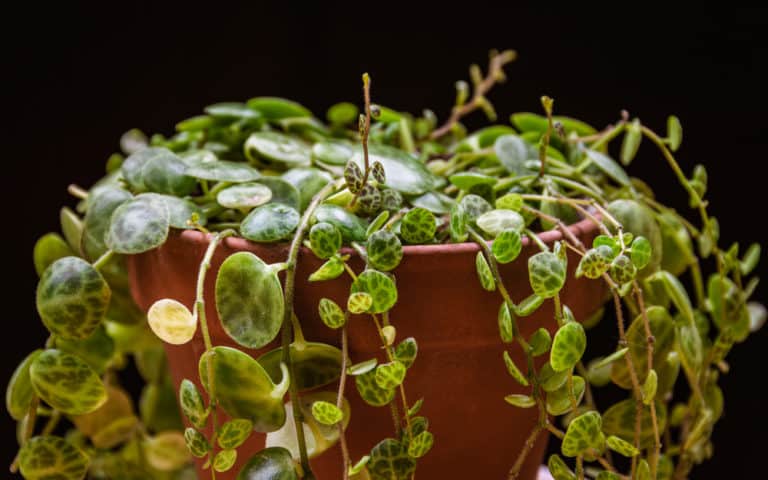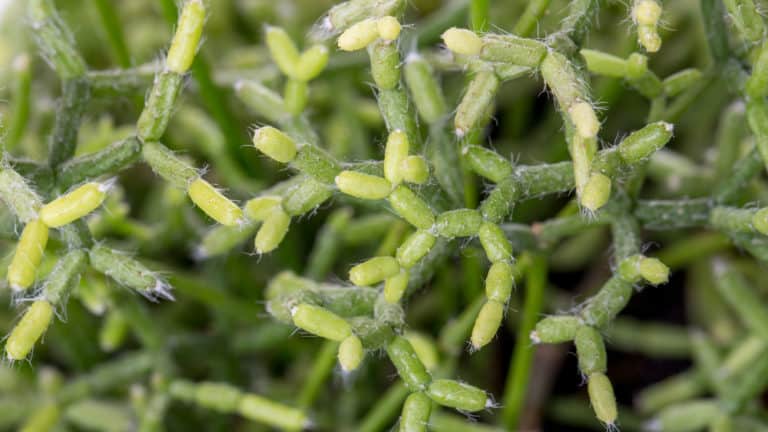Philodendron Erubescens ‘Imperial Green’ Care Guide (2024)
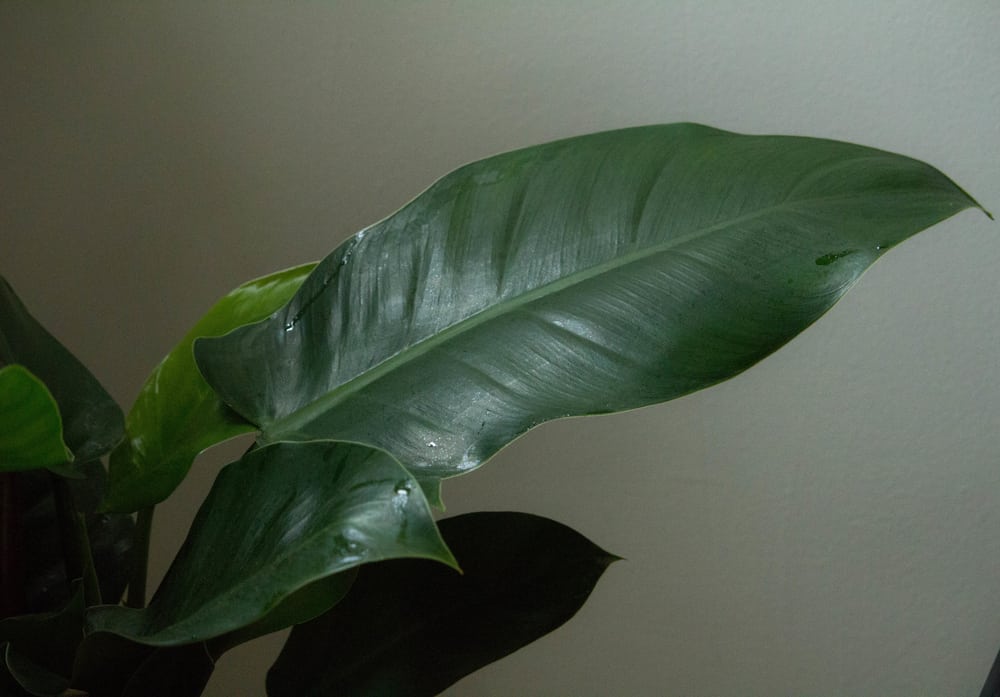
Another Philodendron variety that has a simple yet elegant-looking foliage is the Philodendron Imperial Green. Characterized by its upright, green, and glossy leaves, this ornamental plant is a stunner in an indoor setting. Also termed the Green Philodendron, it has the reputation of being easy to care for and maintain.
| Scientific Name | Philodendron erubescens ‘Imperial Green’ |
| Common Name | Sweetheart Plant, Imperial Green, Imperial Green Philodendrons |
| Light | Bright indirect sunlight |
| Watering | Once every 10 days |
| Temperature | Night temperatures of 65 to 70°F (18 to 21°C) and day temperatures of 75 to 85°F (24 to 29°C) |
| Hardiness Zone | Zones 9 and 10 |
| Humidity | 50-60% |
| Soil Type | Loose, well-drained soil that is high in organic matter |
| Soil pH | Between 5 and 8 |
| Fertilizing | Balanced (20-20-20) fertilizer, growing season |
| Repotting | Repot it once the roots start growing out of the bottom drainage holes |
| Pruning | Prune off any dead or damaged leaves as you feel is necessary |
| Propagation | Stem cuttings in water or soil |
| Toxicity | Poisonous to humans and pets |
| Mature Size | 90 to 120 cm (35 to 47 inches) indoors |
| Bloom Time | Once a year, it will flower every May to July |
What’s Unique About Philodendron Imperial Green?
The lush foliage of the Philodendron Imperial Green plant is something that picks the interest of many. Not only are they pretty with their upright orientation, emerald green color, and glossy touch, but are also beneficial as they have air-purifying qualities. It’s a perfect ornament for an indoor setting.
This Philodendron is native to the West Indies and the tropical rainforests of Central and South America. Unlike the other trailing philodendron species, this one has a different growing habit. It grows compact and upright, producing generous sizes of leaves that everyone can enjoy. It looks a lot better when potted.
Philodendron Imperial Green Care
Philodendron Imperial Green plant care is not as demanding as the other delicate plants you may have. They will do well once you’ve given them proper lighting, planted them in the ideal soil mix, and provided them with the correct humidity level.
We’ll discuss more Green Philodendron care tips in the next parts.
Light
The natural light condition from where your plant originates is bright but indirect. In rainforests, the canopies of trees are most likely to give partial shade. Hence, you must mimic that condition in order to properly achieve the Philodendron Imperial Green light requirements.
What we recommend is to place it near a window where there’s dappled light throughout the day. You can have it exposed to the full sun too but only for 3 to 4 hours daily. Avoid extremely low light conditions, too. You can just use grow lights or fluorescent lights to supplement your Green Philodendron light needs.
Watering
You must water Green Philodendron to keep the soil moist but not to the point of letting the soil be soggy. Overwatering can lead to some serious problems like root rot. We don’t want this scenario to happen because it can easily kill your precious Philodendron.
Philodendron Imperial Green watering is a critical task. You need to be strategic in your timing and make sure that to strike the right balance. What we recommend is that you check the soil moisture with your fingers. Once the first 1 to 2 inches of the surface is dry, that’s a signal to water again. This way, you’re able to fulfill the watering needs of your plant.
Temperature
The best Philodendron Imperial Green temperature range will fall between 75 to 85°F (24 to 29°C) during the day and 65 to 70°F (18 to 21°C) during the night. Maintaining the right temperature range benefits the plant as it contributes to its growth process. Amazingly, they need to accumulate a certain level of heat to be able to undergo development.
Hot and cold drafts are not ideal as they result in extreme temperature for Green Philodendron. Every plant has limited temperature tolerance. For Philodendron Imperial Green, the lowest temperature allowed is up to 12°C (53.6°F). They’ll thrive best in places under USDA hardiness zones 9 to 10.
Humidity
The most ideal humidity for Green Philodendron is somewhere between 50 to 60%. Being a tropical plant, it’s most likely to flourish in an environment with a high humidity level. Nevertheless, it can also tolerate as low as 40% humidity compared to other Philodendron species. Thanks to its glossy leaves.
If you’re struggling with meeting the Philodendron Imperial Green humidity requirements, using a humidifier or pebble tray will help. If you don’t have them, manual misting around the plant will do. You can do this from time to time when the environment gets drier than usual. Just make sure there’s proper air circulation to prevent moisture build-up and mold formation.
Soil
If you’re serious about growing Philodendron Imperial Green, make sure that you pay close attention to the soil mix. What it wants is a well-draining mix that gets rid of excess water but is able to retain enough moisture for the roots to absorb. You can mix 50% potting mix with 50% perlite to achieve this. You may also use a combination of ⅓ coco coir or peat, ⅓ orchid mix, and ⅓ perlite to establish the soil for Green Philodendron.
Test the acidity or alkalinity of the mix. The correct ph level for Green Philodendron is somewhere between 5 to 8. Don’t forget to sterilize the Philodendron Imperial Green soil before potting.
Fertilizer
As a foliage plant, Philodendron Imperial Green plants will surely benefit from the regular application of fertilizer. The steady supply of nutrients will help maintain those lush foliage. We recommend that you apply fertilizer for Green Philodendron once or twice a month. Use the one with a balanced fertilizer ratio of NPK.
Dilute the Philodendron Imperial Green fertilizer to half before application. If it’s a foliar fertilizer, spray it directly on the leaves. If not, pour it on the soil a few inches away from the plant’s base. This is to avoid fertilizer burns. Using organic fertilizers is also good.
Potting & Repotting
Repotting Green Philodendron will have to take place on a yearly basis considering how fast it can grow. Of course, this can be affected by the growing environment. But naturally, they easily fill the pot causing the roots to grow out of the holes. In that sense, you will need to repot to increase the pot size to about 1 to 2 inches.
Wait for the late spring or early summer seasons before you proceed with the Philodendron Imperial Green repotting. This is because it’s during these periods that they are actively growing. So, the chance of them recovering fast from the stress of potting is high.
Pruning
Philodendron Imperial Green pruning is not something that you’ll have to spend so much time with. You can do it occasionally just to get rid of the damaged, diseased or dead leaves. Basically, this is to keep the plant neat and in better shape. You just have to trim the plant minimally.
What’s more important though when cutting Green Philodendron is to maintain proper sanitation. Clean and disinfect the shears before and after pruning to keep. This is to prevent the potential spread of diseases. Make clean cuts all the time. And lastly, properly dispose of diseased parts after pruning.
Propagation
The use of stem cuttings is the best means to do Philodendron Imperial Green propagation. There are two ways to root the cuttings. You can initially plant it in a cup of water or directly in the potting soil.
The basic steps to propagate Green Philodendron includes cutting a healthy stem that is at least 3 to 6 inches long. Make sure it has a few leaves on. It should have a node as well because this is where new growth will emerge. Submerge the bottom part to clean water (or in soil). Cover it with plastic to preserve humidity. And, wait around 3 to 4 weeks for the roots to grow.
Also, make sure to check out our in-depth Philodendron imperial red care guide.
Common Problems of Philodendron Imperial Green
There are a few Philodendron Imperial Green problems to watch out for. Some of them are visibly shown on its leaves like brown spots, chlorosis, and drooping. Root rot is also another common problem that could lead to death. On top of these, there are also pest problems with Green Philodendron that one should be aware of.
Pests
Mealy bugs, aphids, scale, and spider mites are the ones on the list of Philodendron Imperial Green pests. These are common to most houseplants so don’t be surprised if they try to visit and nestle in your Philodendron plants. It could be difficult to spot them because of their minute size. So we warn you to pay close attention.
To save your Green Philodendron from worse damage, make sure to get rid of them the moment you see them roaming around. Splash them off with pressurized water. If they still stick around, apply neem oil or insecticidal soap. You have to do it patiently.
Diseases
Another issue with Green Philodendron is the occurrence of diseases. The appearance of brown and water-soaked spots in the leaves could indicate the existence of a fungal or bacterial disease. They are most likely a result of excess moisture especially if the leaves remain wet for longer periods.
Chlorosis or yellowing can also be a sign of more serious Philodendron Imperial Green diseases. For example, the Xanthomonas Bacterial Leaf spot appears to have dark lesions with a yellow halo around it. Another serious problem, root rot, happens as a result of overwatering. From the roots up to the stems and leaves, these portions become brown and mushy, eventually dying.
Growing Problems
You can easily tell if your Philodendron Imperial Green is experiencing growing problems. You’ll notice first and foremost that its leaves are relatively small. Additionally, the whole plant is taking a long time to grow. It is highly possible that the plant is not receiving the ideal growing conditions that it deserves.
The color of the leaves will also tell if you have a sick plant. If they are pale or have some discoloration like browning or yellowing, they are most likely experiencing trouble. We have mentioned the possible causes in the section above. So, make it a habit to always be curious about your plant’s behavior.
Toxicity of Philodendron Imperial Green
You will have to handle your Green Philodendron with extra caution. In as much as this plant is a stunning beauty, it does contain undesirable properties like some serious toxicity. It contains large amounts of calcium oxalates that could be toxic to humans and pets alike. So, be conscious and careful.
For Humans
Philodendron Imperial Green is mildly toxic to humans including little children. So, it’s better to keep it away from their reach. Simply touching the leaves won’t bring any serious issues but the plant’s sap will create potential problems like irritation on the skin. Make sure to wear your gloves when cutting any portion of your Philodendron.
Ingestion of any plant parts will bring serious health problems like oral irritation, pain, swelling of the mouth, excessive drooling, difficulty in swallowing, and even loss of speech. In case such incidents happen, immediately consult your physician for a remedy. Refrain from doing self-medication.
For Pets
In the same manner, pets are likewise vulnerable to the toxicity brought by the Philodendron Imperial Green. The calcium oxalates present are characterized by having sharp needle-like structures. These crystals form a cluster and are normally a defense mechanism by plants against herbivores. Hence, you could expect that it really has an offensive nature.
Ingestion of the plant could result in severe irritation of the gastrointestinal (GI) tract including the mouth, throat, stomach, and intestines. The symptoms are almost the same as that in humans. However, the outcome may be more dangerous as your pets could potentially die. Again, seek the help of your animal doctor for immediate treatment.
Philodendron Imperial Green Appearance
The most stunning part of the Philodendron Imperial Green’s appearance is its large and broad leaves. While the plant is low-growing, the upright and spreading orientation of its leaves creates a beautiful structure and shape that catches the eyes of many. It looks classy and elegant at the same time.
Foliage
The foliage of Philodendron Imperial Green is self-heading which means that they grow upright. This is in contrast with the vining types of philodendrons that have a trailing growth habit. Each leaf is large in size about 8 inches wide and 18 inches long. They fan out in all directions from the short stems creating an attractive display.
The leaves have that glossy touch and appearance. You can wipe them off with a cloth from time to time to remove the dust especially if it’s kept indoors. It has a very close resemblance to the Philodendron Imperial Red. The only difference is their color.
Flowering
While it happens rarely, the Green Philodendron flower is also present every May to July. However, your plant needs to be mature first before it becomes capable of blooming. Naturally, it would take about 15 to 16 years before that happens. So, don’t bother if yours haven’t produced any flowers yet.
Once the Philodendron Imperial Green flowering begins, you’ll observe the appearance of a reddish pod or spathe that encloses the white spadix. The flower of the Green Philodendron will remain open for a little more than a day. After that, it will then close and die within a month.
Size and Growth
The mature size of Philodendron Imperial Green can reach up to 90 to 120 cm (35 to 47 inches) when grown indoors. It can spread up to 90 cm (35 inches) in width. This scenario is possible if the plant is healthy and receives the best growing conditions.
This plant has a moderate to fast growth rate so expect it to grow significantly even after just a year of tending to it. You will need to repot the plant to a larger container to allow it to grow more. If yours has stunted growth, you will need to pay more attention to your plant. Make sure it receives proper care.
Philodendron Imperial Green Fragrance
While the leaves have no special scent, the white flowers of the Philodendron Imperial Green are known to have a sweet fragrance. That spadix emits a special fragrant smell once the spathe or pods enclosing it opens. However, the time of its opening is only short. It will only be for a little longer than a day.
Smelling the Philodendron Imperial Green fragrance is going to be a rare chance, though. This is because the plant rarely produces flowers, not unless it’s mature enough to do so. If you have one that’s already mature, there’s a fair chance to witness its flowering and smell those fragrant flowers.
Suggested Uses for Philodendron Imperial Green
There are many ways to use Philodendron Imperial Green. The best way to utilize this plant is to use it as an ornament indoors. Plant it in pots and use it to decorate and add color to your home. You can place it in a location where ventilation is not that good because this plant will help purify the air there. It has the capacity to remove toxins like benzene and formaldehyde.
Your balconies and terraces will also look good with the presence of a potted philodendron. You can also use it to decorate your offices, your tables, and windows.
FAQ
What is Philodendron Imperial Green?
Philodendron Imperial Green is another variety of the Philodendron erubescens but a hybrid one. It’s a tropical ornamental plant that’s highly popular for its elegant foliage.
How to identify Philodendron Imperial Green?
The foliage of Philodendron Imperial Green is large, green, and glossy. It has an upright growing habit where the leaves fan out in all directions creating a lush spread.
How to care for Philodendron Imperial Green?
Proper growing conditions like bright but indirect light, moist soil, moderate to high humidity, and warm temperature are essential ingredients for keeping Imperial Green healthy.
How to grow Philodendron Imperial Green indoors?
Find the right spot that gives the ideal growing environment. It must have dappled light, not prone to cold or hot drafts, and must have a high humidity level.
How to grow Philodendron Imperial Green outdoors?
Place the plant under partial shade, preferably under tree canopies. This is to prevent leaf scorching when the heat coming from sunlight gets too intense.
How fast does Philodendron Imperial Green grow?
Philodendron Imperial Green is a moderate to fast-grower, depending on how ideal the growing conditions are.
How tall does Philodendron Imperial Green grow?
A single Philodendron Imperial Green can reach a mature size of 90 to 120 cm (35 to 47 inches). It can spread up to 90 cm (35 inches) in width or more.
How to make Philodendron Imperial Green grow faster?
Philodendron Imperial Green has an affinity for moist environments. So, keep the soil moist but not overwatered. Provide moderate to high humidity. Fertilizer also helps boost the plant’s growth.
How to stake Philodendron Imperial Green?
Staking this plant won’t be necessary because it grows in an upright manner. It’s also low growing so it can carry itself well even without support.
How to pot Philodendron Imperial Green?
Find a slightly larger container. Prepare a fresh potting mix. Carefully plant the Philodendron in the new container and fill it in with the mix. Water the soil thoroughly and drain all excess.
How to revive Philodendron Imperial Green?
If your plant is stressed, the way to revive it is to remove it from the stressful environment. Check the light condition, the soil, humidity, and temperature. Make necessary adjustments.
Why is my Philodendron Imperial Green dying?
This is most likely a problem caused by root rot. The best way to know is to check the condition of the roots. Repot the plant using fresh potting mix but make sure to trim the rotten ones.
Why is my Philodendron Imperial Green drooping?
It can be due to overwatering or underwatering. It’s best to check the soil first before making assumptions. If dehydrated, do deep watering. But if it’s overwatered, you may need to repot the plant.
How cold can Philodendron Imperial Green tolerate?
Green Philodendron can tolerate a temperature as low as 12°C (53.6°F) without trouble but only for a short period. Prolonged exposure may cause irreversible damage.
How to get rid of pests on Philodendron Imperial Green?
Splash them off with pressurized water. If not enough, you can use neem oil or insecticidal soap to kill them. Do this consistently so they won’t have a chance to reproduce.
Is Philodendron Imperial Green toxic to cats?
Yes. It has a toxic property that can potentially harm your cats. So, it’s better to keep this plant away from your pets, if you have them.
Is Philodendron Imperial Green toxic to dogs?
Yes. Ingestion of any plant parts could create serious problems like irritation of the GI tract. This is because a huge amount of calcium oxalates are present in the Philodendrons.
Is Philodendron Imperial Green toxic to children?
Yes, it is. So, please be wary. Philodendrons, in general, are toxic to humans and more likely to children. Keep them from ingesting any part of this plant.
Is Philodendron Imperial Green toxic to humans?
Yes. Simply touching the surface of the leaves won’t create trouble. However, once ingested, it could lead to irritation. The sap can also irritate the skin.
Does Philodendron Imperial Green have a scent?
The leaves have no scent but the flowers have. It is known to emit a sweet fragrant smell once it opens. Such occasion is rare, though.

